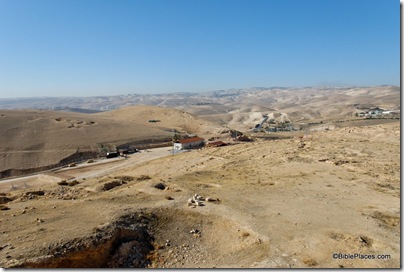The excavations of the site proposed to be biblical Ai continued for a second week, with a brief description and photos posted on the website of the Associates for Biblical Research.
Significant discoveries continued to be made during the second and final week of the ABR excavation at Kh. el-Maqatir, June 1-5, 2009. During the first week ABR Board President Gary Byers cleared the gate entry way and found considerable evidence for an intense fire, evidenced by the limestone bedrock turning red. Oral Collins of the Berkshire Institute for Christian Studies continued the excavation of a section of the western wall of the fortress discovered in 2000. The wall at this point proved to be 3.3 meters wide and is preserved to a height of 1.2 meters. Just inside the gateway of the fortress ABR Director of Research Bryant Wood uncovered a portion of a building, perhaps an administrative center. In the northeast corner of the 6 x 6 meter excavation square a deposit of four vessels from the time of Joshua were found: a storage jar, a small cooking pot, a trumpet-base bowl and a dipper juglet. The four restorable vessels will provide important evidence for dating the fortress.
